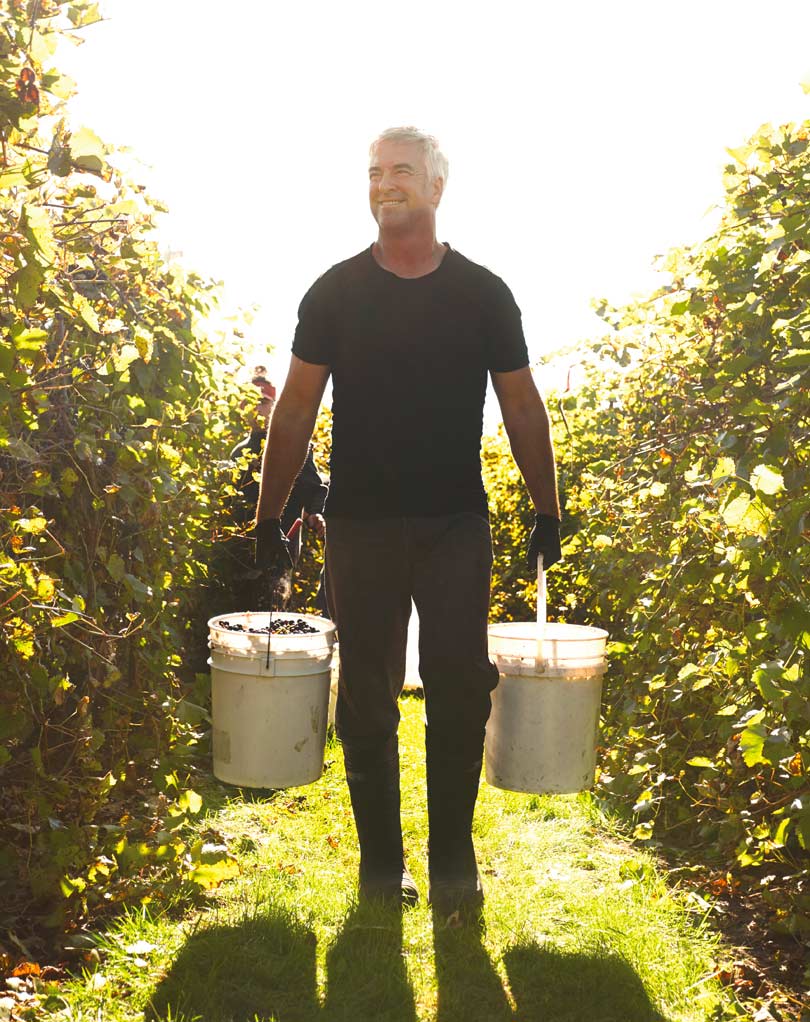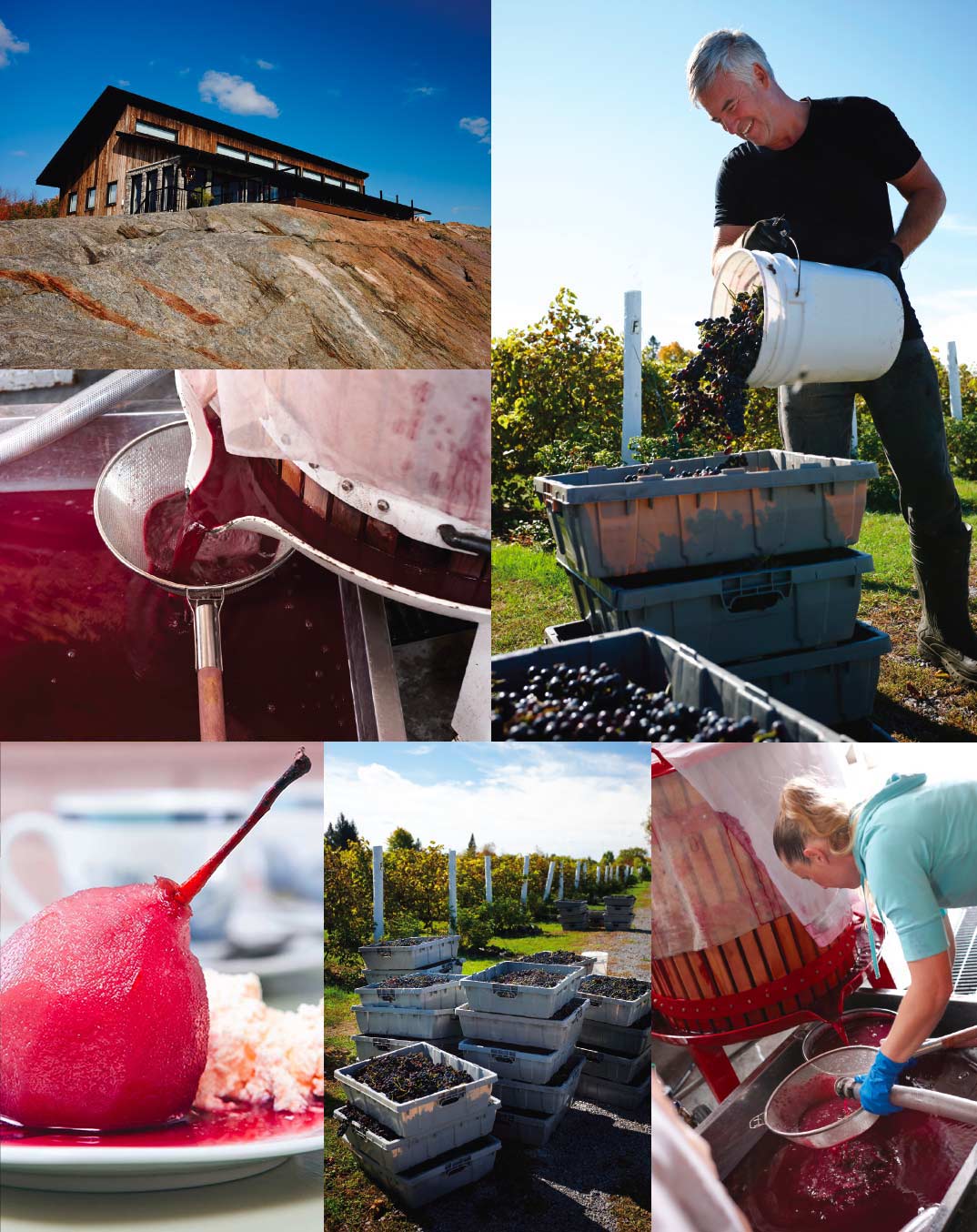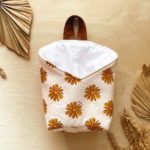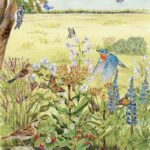


Right to left: Operations Manager for Ivanhoe Cheese, Victoria Cox; Kara and Darold Enright, Enright Cattle; Maple Dale Cheese;
Breaking the rules and surprising the critics, Potter Settlement Artisan Winery produces internationally multi-award-winning wines in tiny Tweed, Ontario.
Ask any oenophile about the best terroirs for growing great grapes, and the Canadian Shield is not on the tip of their tongue. Let’s be honest: it doesn’t even flicker across the imagination, but actor and winemaker Sandor Johnson is changing that, one medal at a time.
Situated on the 44th parallel, Potter Settlement is awfully far north for a vineyard – the winters are harsh and the summers are not terribly long (though they are getting warmer, due to climate change). So what is it about this place that gives Johnson’s wines their winning edge and unique flavour profiles? Minerals – hundreds of them – deposited on this spot by receding glaciers thousands of years ago. Whereas the soils of Ontario’s most famous wine region, Niagara, contain 15 recorded minerals, the land under vine here is rich, with 242: everything from iron to granite to semi-precious stones – garnet and amethyst – all adding their je ne sais quoi to the wines. There’s even gold in them thar hills, though not enough to dig for; here, there’s more gold hanging on the bottles than in the ground. In fact, the amount of bling dangling from the display bottles behind the tasting bar verges on scandalous.
However, in the wine world, there’s no such thing as too many medals. Especially when a little winery from Tweed, Ontario is wowing judges in France, California and London. Of course, it’s not just good soil that makes these wines so special; it takes countless hours of hard work, good science, the location’s uniquely forgiving micro-climate, some biodynamic hocus-pocus, and Johnson’s unorthodox, creative – even cloak and dagger – approach to the craft. This is an “artisan” winery in the truest sense. Johnson isn’t just making wonderful wines, he’s storytelling, inventing and reinventing, breaking new ground, asking “what if?” and performing archeological miracles. One of his wines is fermented with a yeast drawn out and grown from a fragment of barrel stave he managed to sweet talk from a cooper in France; another was made with yeast grown in a buried cow’s horn stuffed with herbs, à la fifth-century monks. And for a soon-to-be released wine Johnson is calling Ancient Ferment, he’s employing a 6,000-year-old yeast resurrected from an ancient Cyprian wine amphora.
“I’ve been accused of corporate espionage,” says Johnson. “Which I don’t like and don’t accept.”
The man is less a spy and more of an investigator, maybe even a bit of a mad scientist. He challenges the limitations and traditions of the process, the grape, the terroir, where others haven’t, and he’s pushing the envelope of what can be done with wine – white, red, and fortified – here in Canada, and indeed, the world. It’s not just yeasts and grape varieties, such as the Marquette grape, Johnson experiments with; his curiosity extends to rare and extinct timbers for constructing the finest barrels for aging and imparting unique flavours; and he’s not shy about investing in his flights of fancy. He paid €7,000 for a single barrel to make just 336 bottles of his Triple Rare Ferment Chardonnay; he’s dredged Lake Superior for antique chestnut timbers; and he’s repurposed antique butternut wood felled by his grandfather. On the rocky yet lush vineyard, the heavy lifting starts in early March, when a team of workers snip their way up and down all 13 acres, over six weeks, pruning the vines back – hard – encouraging healthy growth. Mother Nature takes over providing sun, heat and rain, while deep taproots draw up the mineral-rich water from an underground river that flows southeast from Georgian Bay.
Potter Settlement – named after the road it’s on – is a very small winery, producing only 1,000 cases, or 12,000 bottles, per year. But with wine, small is mighty. Here there is no machinery, only caring human hands, tending the vines, pruning and cropping, and selectively picking only the best, ripest grapes come harvest time.
It’s these hands-on, small-batch, organic methods that set Potter Settlement apart from the big, commercial wine makers. But Johnson didn’t set out to create a unique northern winery; the place has been in his family since the 1830s, and after three decades acting and modelling in the US, it was time to come home – at least for the summers – to see how far he could take this rugged terrain on its journey from farmland to vineyard.
He’s lived in New Zealand, Australia, France, Germany, California, and Manhattan, and everywhere he’s gone, he’s brought home ideas and knowledge that he applies at Potter Settlement. He still spends the winters in California, where he works at some of the top Napa Valley wineries, often as a volunteer. “I’m not there to make money,” says Johnson. “I’m there to learn.”
And now, two decades after those first vines went into the ground, and only six years after the release of his first vintage, the awards for these unconventionally produced wines continue to pour in. “We’ve entered our wines into 28 competitions,” says Johnson, “and come home with 28 wins from some of the most prestigious competitions in the world – France, London, San Francisco.” Johnson has put his wines on some high-profile tables: Barack Obama’s and Justin Trudeau’s for example. Now perhaps he’ll put Tweed on the winemaking map, too.
Poire à la Beaujolaise
“My mom’s side of the family hails from France,” says Sandor Johnson, owner of Potter Settlement Artisan Winery in Tweed, Ontario. “And this is a traditional dessert from the region of our ancestors. We love to serve it with local Kawartha Dairy vanilla ice cream, over which we drizzle the wine reduction and add a final dash of cinnamon.”
Ingredients
4 to 6 pears, Bosc or Anjou work best, halved and cored, skin on
1 cup Potter Settlement pear wine
1 cup Potter Settlement Cabernet Franc
1 lemon, washed, zested and juiced
1 orange, washed, zested and juiced
¾ cup sugar
3 tbsp. honey
2 tsp. vanilla extract
2 tsp. ground cinnamon
Optional but highly recommended: vanilla ice cream, mascarpone cheese, or crème fraîche for serving.
Directions
* Slice pears in half lengthwise and remove cores; a melon baller works well for this.
* Into a saucepan over medium heat add citrus, wines, sugar, honey, vanilla, cinnamon, and pears, and bring to a gentle boil, uncovered.
* As the liquid simmers, continuously spoon it over the pear halves; the liquid will be reducing all the while.
* When it reaches a syrupy consistency, it’s done.
* Serve warm or chilled, with one of the creamy garnishes mentioned above.
Makes 4 – 6 servings
Operations Manager for Ivanhoe Cheese, Victoria Cox, with a block of their extra old white cheddar.
Ivanhoe Cheese and Potter Settlement enjoy a unique connection. In 1850, the McClure expedition left England and headed to the Arctic in search of the Northwest Passage; onboard was Henry Gauen. The expedition was a success, and Gauen used his reward money to emigrate to Canada, where he founded Ivanhoe Cheese. Nearly 200 years later, Potter Settlement has produced a port-style fortified wine – Portàge – inspired by the trials endured by the barrels of wine present on that journey. Sandor Johnson calls it “The greatest wine and cheese story ever told.”
Though started by one man, Ivanhoe Cheese is now owned by dairy giant Gay Lee Foods; yet the practice of crafting fine, award-winning cheeses by hand continues.
The dairy’s shop in the hamlet of Ivanhoe is visited by about 75,000 cheese lovers annually, and on the way to the shop, just off the road in front of an Amish farm, keep an eye out for the historical Gauen Cemetery: a tiny plot surrounded by a white wooden fence, where Ivanhoe founder, carpenter, Arctic explorer, and Johnson’s inspiration, Henry Gauen is buried.
Kara and Darold Enright, Enright Cattle, raise Simmental cattle on natural pasture.
Raising fantastic beef is just one goal at the Enright Cattle Company. This fourth-generation farm is committed to its community, and stewardship of the land as well. As a sustainable farm, they raise the crops that feed their animals – a herd of fewer than 100 Simmental cattle – and in turn use the rich bovine manure on the fields. Supporting the local business and rural community is vital to the Enrights; and nothing goes to waste, from raising and dry-aging superior beef, to making soap with the animals’ tallow, hand-crafting leather goods from the hides, and making pet food from the offcuts and offal. The farm is a beehive of activity, offering long-table dinners, markets and events. For co-owner Kara Enright, it’s paramount that this land goes on to support generations to come, with healthy, productive soil. Sandor Johnson is a supporter of the family’s farming ethos. “Enright Cattle Co. is also a local company and family owned, and they put into practice sustainable farming, which I love,” says Sandor Johnson. “Their products are found in the finest restaurants in Ontario and we are lucky to have them in our area.”
Making a customer favourite – squeaky fresh curds – by hand at Maple Dale, just north of Belleville
Back in 1888, just north of Belleville, a cooperative of dairy farmers formed the Zion Cheese Company. Today, it’s known as Maple Dale Cheese, but this family-owned and operated business still makes cheeses that are hand-crafted in small batches from local dairy products. With a focus on multi-award-winning aged cheddars, veteran cheesemakers Chris Lavecque and Milton McConnell, who have been in the cheesemaking business since 1997 and 1969 respectively, honour the dairy’s traditional roots while stretching their creative muscles with a selection of flavoured cheeses. “I love Maple Dale cheese for their amazing selection of hard cheeses and for sourcing locally,” says Johnson. “They are a small company – not a large corporate conglomerate – and family owned, and that really comes through in the quality of their products.” The Maple Dale shop is a foodie paradise with over 2,000 products, including cheeses not available at other retailers, squeaky fresh curds, and a really special, nine-year-old sharp cheddar, not to mention the intoxicating aroma of freshly baked cheese bread hanging in the air.
Story by:
Signe Langford
Photography by:
Christopher Gentle




